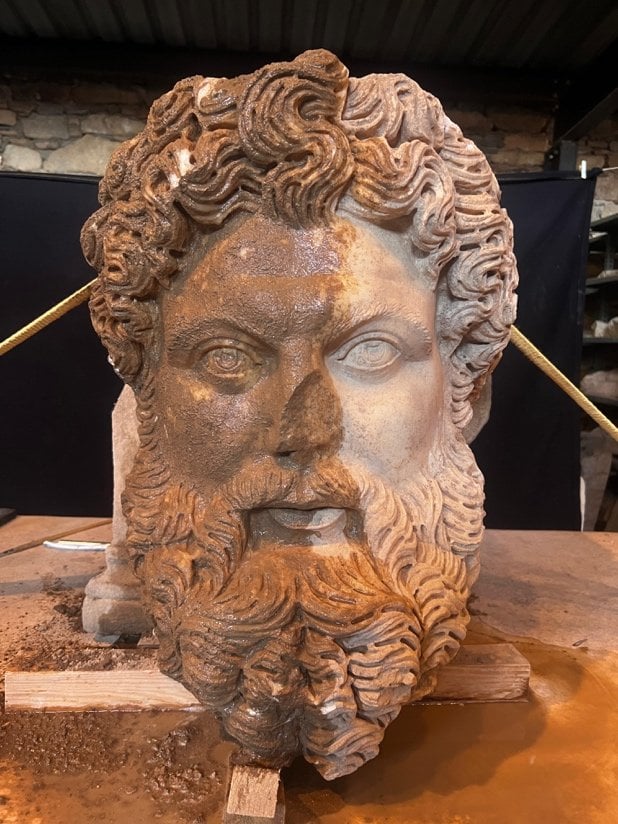Introduction
On July 31, 2024, a remarkable discovery occurred in the ancient city of Aphrodisias in western Turkey when archaeologists uncovered an exquisite marble head of Zeus. Dating back to the 2nd or 3rd century AD, this sculpture stands approximately 66 centimeters tall and showcases the intricate craftsmanship of ancient artisans.

The Ancient City of Aphrodisias
Aphrodisias was a significant center of art and religion during the Roman era, renowned for its exquisite sculptures. Located near the Temple of Aphrodite, this city attracted many skilled artisans, contributing to a rich cultural heritage that still fascinates historians today.
The Discovery of the Marble Head
The head of Zeus was discovered while a team was clearing vegetation near the Temple of Aphrodite. The intricate details in Zeus’s hair and beard reveal advanced drilling techniques used by the artisans. The lifelike features and remnants of paint suggest that this depiction aimed to present Zeus as a vibrant, living deity.

The Significance of the Sculpture
This discovery is not just an artistic marvel; it also holds profound religious significance. It likely adorned a temple or sacred space dedicated to Zeus, reflecting the interconnectedness of deities in the spiritual life of Aphrodisias’s inhabitants.
Preservation and Study
After its discovery, the marble head was transported to a conservation laboratory to ensure its delicate details and remaining paint were preserved. Researchers are conducting analyses to gain insights into the sculpting techniques and cultural meanings behind this important artifact.

Conclusion
The head of Zeus represents a crucial find, offering valuable insights into the ancient city’s artistic, religious, and cultural practices. Such discoveries remind us of the richness and diversity of our cultural heritage, inspiring ongoing exploration and appreciation for the legacies of ancient civilizations.
